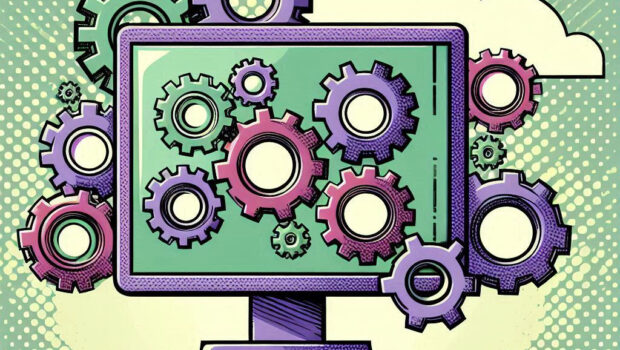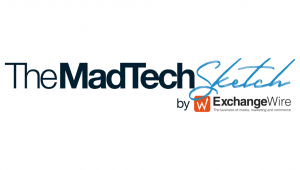What’s Really Powering Ad Tech in 2025? Insights from Women at the Forefront
by on 7th Mar 2025 in News

As ad tech continues to evolve, advertisers, publishers, and technology providers are navigating new challenges and opportunities in 2025. But beyond the noise of industry buzzwords and shifting regulations, what’s actually working?
To answer this, we spoke with women leaders driving innovation across the ecosystem, including Shilpa Kolte (Microsoft Advertising), Lotus Xue (CamScanner), Tali Bakshi (GeoEdge), Sophie Toth (Rakuten Viber), and Jenny Lee (AlgoriX). From AI-driven solutions and privacy-first strategies to untapped opportunities in monetisation and CTV, their insights highlight the key shifts shaping ad tech today – and what advertisers, publishers, and platforms must do to stay ahead.
Here’s what they had to say.
What’s one major shift happening in ad tech right now that people should be paying more attention to?
Shilpa Kolte, Director International Partner Sales (Asia), Microsoft Advertising: One major shift happening in AdTech that people should pay more attention to is AI – based solutions to engage audiences. Consumers are stressed, overwhelmed by the need to get more done while maintaining peace of mind in a hyper-connected world. This is where AI can play a transformative role. Great technology experiences are about how you feel, not just what’s under the hood. It should be about what you experience, as a consumer.

With Generative AI, experiences will be designed specifically for each person, setting new standards of usefulness and relevance. And AI-powered advertising should aim to become a seamless part of the user experience, integrating smoothly into their digital interactions without feeling intrusive or disruptive. Fundamentally, it's about rethinking how we view AdTech. Instead of seeing it merely as a tool for marketers, we should see it as technology designed to help consumers achieve more while adding value and support; to help you focus on what’s most important and make the digital world infinitely accessible to all.

Lotus Xue, Head of Programmatic Operations, CamScanner: As advertising continues to evolve, demand-side players are becoming increasingly stringent in their pursuit of effectiveness. The industry is actively exploring new ad formats and interactive methods to engage users and ultimately drive conversions. This has led to intense competition, with many advertising platforms resorting to more inducive, multi-step, and time-consuming ad formats to secure user engagement. However, this poses a significant challenge to user experience. In this process, it is essential to strike a balance between revenue generation and user experience.

Tali Bakshi, Chief Commercial Officer, GeoEdge: Programmatic CTV adoption is accelerating, but it’s happening without the necessary safeguards to ensure ad safety and a seamless viewer experience. Unlike linear TV, where ads undergo strict review before airing, programmatic CTV lacks scalable ad quality controls. This gap exposes viewers to disruptive and intrusive ad experiences.
What’s one key lesson from the past year that will influence how companies approach ad tech in 2025?

Sophie Toth, Programmatic Partnership Manager, Rakuten Viber: The digital market has been disrupted in the past couple of years. Therefore, its conditions are unpredictable, with rapid shifts of budgets that render previously successful strategies ineffective and predictions obsolete. Traditional seasonal events such as Black Friday, Cyber Monday, Christmas, and Valentine's Day may no longer guarantee the same results as in past years for traditional publishers, especially those who have a predominantly OMP revenue. Additionally, the emergence of new platforms and evolving consumer/advertiser demands require businesses to adapt their strategies beyond traditional publishing channels. As a result, budgets are increasingly being allocated toward new, innovative, and flexible solutions that align with these changing market dynamics.

Jenny Lee, Senior Partnerships Manager, AlgoriX: One key lesson that I observed last year was the importance of direct supply partnerships. With increasing concerns about transparency, fraud, and rising costs in the programmatic ecosystem, many advertisers are realising the value of building direct relationships with publishers and suppliers. In 2025, companies will likely prioritise forming stronger, more direct partnerships with premium publishers and supply-side platforms (SSPs) to ensure better inventory quality, reduced fees, and greater control over their campaigns. SSPs can play a part to ensure the buyers have access to direct publisher inventory.
Tali Bakshi: The past year has highlighted the critical link between quality and viewer retention. Users are more likely to churn when ad experiences conflict with their expectations. Viewers expect relevance, control, and safety- CTV players can no longer prioritise reach and scale at the expense of the viewer experience.
Lotus Xue: Transparency in collaboration is becoming a new competitive barrier. To ensure fair competition, media platforms expect demand partners to provide more capabilities to support real-time bidding. Whether on the server side or client side, offering diverse bidding methods and relevant data – such as pricing and ad creatives – can facilitate better tracking and optimisation.
What’s one technology or solution that is proving to be particularly effective in tackling ad tech challenges this year?
Jenny Lee: AI-driven optimisation will be effective in addressing privacy concerns in the ad tech space. As a simple example, with the help of AI and machine learning, contextual targeting can be done by analysing the app/web content in real-time. This allows ads to be highly relevant to users based on the content they’re engaging with, without relying on personal data or third-party cookies. This ensures privacy compliance and also improves user engagement which can drive better conversion rate.
Sophie Toth: Verification and compliance-related tools. Especially around ad quality. One of the challenges is already to block unwanted images on a dynamic creative asset, which requires a more in-depth scanning, monitoring and monitoring capabilities. Of course, all these tools need to be compliant with regional laws and company policies and mitigate the revenue risk through OMP and other indirect inventory selling models.
Shilpa Kolte: One of my personal favourites is our AI-based suggestions engine on Microsoft Monetise, called Insights. This powerful tool significantly reduces the time it takes for users to optimise their setup, enabling them to capture maximum revenue within our ecosystem. The speed of the new features we add on in Insights is mind-blowing. It has fundamentally streamlined the workflows some of our customers have followed for years.
Tali Bakshi: Creative auditing for CTV is becoming a game-changer. Automated CTV ad review removes offensive, deceptive, and disruptive ads before they ever reach viewers. At the same time, advanced creative auditing intelligence enhances targeting precision, ensuring ads align with the right audiences boosting CPMs, increasing bid density, and improving fill rates. Additionally, competitive separation prevents overlapping ads within breaks while turning underutilised inventory into revenue-generating opportunities through smarter categorisation and precise creative alignment.
What’s one area in ad tech that is still being overlooked or underestimated?
Lotus Xue: Overseas markets are gradually embracing splash ads, but adoption remains relatively low compared to the Chinese market. Some platforms still face challenges in optimising their implementation, particularly due to long SDK initialisation times, which prevent splash ads from displaying properly during app cold starts. If this issue is resolved, there is significant potential to further expand the value of splash ads in these markets.
Shilpa Kolte: Now this is likely to be an APAC-specific issue, especially in Southeast Asia, but I find very limited adoption for Header Bidding in the Premium Video space. While there are indeed technological challenges associated with ad podding and header bidding solutions, the technology is widely available. However, there is significant resistance to adopting or prioritising this technology among large streaming businesses and traditional broadcasters for their digital properties. This resistance creates a vicious cycle where supply is not readily available when buyers are looking for it, necessitating heavy manual intervention. This ultimately results in more work for all parties involved in accessing that supply, often feeling reminiscent of the days of insertion orders (IOs) albeit more complex.
Jenny Lee: One area being overlooked is the growth of Connected TV (CTV) in programmatic advertising. The growth of CTV seems limited mainly due to the complexity in integrating it into the broader programmatic ecosystem. CTV doesn’t have the same unified standards as mobile, and its fragmented nature of streaming platforms and devices make it even more challenging for advertisers to execute campaigns efficiently. Over the past few years, more sophisticated programmatic tools are being developed for CTV in the ad tech market, and hence I look forward to CTV being recognised as a high-impact, data-driven, and measurable advertising medium.
If there’s one thing advertisers, publishers, or platforms need to do differently this year, what would it be?
Tali Bakshi: Expand the definition of ad quality beyond relevance. Viewer expectations have evolved, and ad safety is now a non-negotiable part of the experience. CTV players should emphasise stronger creative auditing measures to detect deepfake ads, filter inappropriate content, and protect interactive ad experiences from misuse (e.g., malicious QR codes). If viewers don’t feel safe engaging with ads, they’ll disengage entirely.
Sophie Toth: Innovation with a brand new mindset. There is no digital without continuous tests and a learning mindset. This year, I can predict more augmented reality-related assets and longer and more direct partnerships between supply and demand for simple reasons, trust, regulations, data collection, activation, and finally, beyond the measurement, working together will be the most powerful tool for relevant storytelling and conversion. Shoppable ads will be prevalent for RD campaigns or the lower funnel of the marketing journey, creating a "5 clicks" experience and creating powerful and efficient messaging combined with AR.
Lotus Xue: As a publisher, our focus this year will be on audience segmentation and targeting. We will analyse user behaviour, including in-app activity and spending patterns, to tailor ad strategies for different user groups and maximise revenue. Additionally, we will incorporate higher-value ad formats, such as rewarded videos, to provide users with an incentive while also offering a certain level of ad exemption.
Shilpa Kolte: Most technologies have a predictable adoption curve, typically spanning a 2-5 year period since the industrial revolution. However, AI is a technology that is challenging all traditional notions of a timeline for technology adoption. The speed at which AI is advancing is truly staggering. For advertisers, publishers and platforms, this rapid pace of change necessitates a different approach. They must be open to continuous learning, testing and adapting quickly enough to gain a competitive edge. This proactive stance is crucial to avoid being forced into changes by external pressures or, worse – falling behind in the race against those who adapt more quickly and effectively to the evolving landscape.
Jenny Lee: I believe a privacy-compliant environment isn't something that one party can tackle on its own. It is a shared responsibility across the entire ad tech ecosystem. Advertisers, publishers, and platforms, all need to quickly adapt to the evolving privacy landscape in their own ways. All should invest to ensure data collection, targeting, and measurement are fully compliant with privacy regulations like GDPR and CCPA. With this, we will be able to create a more secure environment, ensuring both user privacy and enhancing effective advertising strategies.
Don't just keep up – lead the change
The insights shared by these industry leaders highlight a key truth: success in ad tech isn’t just about keeping up – it’s about leading the change.
AI, programmatic innovation, new ad formats, and privacy-first strategies are shaping the next era of digital advertising. Yet, as our experts pointed out, opportunities remain untapped, from global market expansion to stronger collaboration between advertisers and publishers.
This Women’s Month, we celebrate the women driving these conversations and shaping the industry’s future. Their expertise is a reminder that innovation happens when we challenge norms, push boundaries, and take action.
Ad TechAdvertiserDiversityPublisher









Follow ExchangeWire